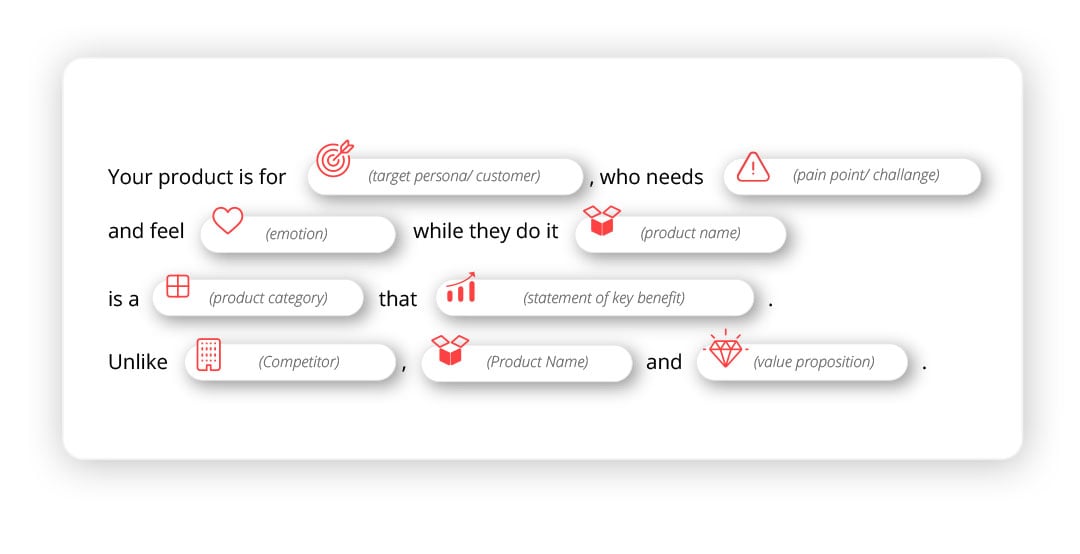How to create a GTM?What does successful messaging and positioning look like?
Product messaging and positioning has long been used interchangeably. However, there are some distinct differences between the two. With out positioning, messaging is just a bunch of statements, and without messaging, positioning isn’t able to be shared with a target audience.
First, let’s define each of these:
1. Positioning: To put or arrange (someone or something) in a particular place or way. Promote (a product, service, or business) within a specific market sector. This is how you want your audience to think about or interact with your products or services.
2. Messaging: In business refers to how an organization talks about the products or services it provides to a specific audience. These carefully crafted statements establish and reinforce the positioning across verbal and written communication.
Although messaging and positioning go hand-in-hand, unfortunately, many businesses fail to understand the difference between them. As a result, they often run the risk of confusion, which can decrease the chances of attracting the right customers and win competitive deals.
To begin crafting your positioning and messaging, you need to answer six basic questions:
- Who is the ideal customer?
- What demographics and psychographics make up your target buyers?
- What pain challenges or needs do those customers have?
- What is the current competitive landscape?
- Are there any gaps in the market?
- Who is going to be using this?
Understanding the answers to the above questions will not only aid in creating your messaging platform but help you align the two and make them work together!
How to create a GTM?
Without the who of your customers, you won’t know who to target. Both positioning and messaging are needed to get the most out of marketing campaigns and sales efforts. However, two things are often overlooked:
Adequate competitive research. This is time-consuming but critical to know how to position your product or services in the market and what challenges you might face.
Continuous team training on how to use it. Without the who will be using it, and then when and how they use the positioning and messaging, you’re missing the final step.
Without doing either of these, it’s hard to build a messaging and positioning framework that doesn’t feel haphazard. To be successful, a go-to-marketing needs to be pressure tested. If either the positioning or messaging cracks under the pressure of a competitive deal or a marketing campaign, then it’s time to rethink the foundation.
Think of it this way; the positioning is like a fishing boat going to the right spot in the ocean, where all the fish are hanging out. But positioning isn’t going to catch the fish. Messaging is the net that’s cast, and the activity of reeling in the net is the campaigns and programs marketing and sales are executing. Messaging alone isn’t going to catch the fish. If you cast a net on land, it’s going to fail. It takes both to capitalize on the opportunity effectively.
What does successful messaging and positioning look like?
Each is required to develop marketing content and paid ads, run campaigns, create web and video experiences, tell stories in sales calls with customers, and guide your product roadmap. So, where do companies go so wrong? If we had to guess, it’s probably the type of competitive intelligence they’re leveraging and how they’re delivering the information.
For positioning, it’s a given that you need to understand everything about your target audience. You also need to know how and where your competitors are talking to those customers. However, traditional CI methods include massive spreadsheets, with notes and links to webpages on updates, the product value props they’re highlighting, weaknesses and gaps, etc. How do you turn your 1000+ line spreadsheet into effective messaging and positioning?
For starters, you should be updating your messaging and positioning when it’s necessary – that could be weekly, monthly, quarterly, annually, etc. The determining factor will be when your competition does something noteworthy and competitors don’t follow a schedule for changes. They’re going to be continually testing for new ways to draw in customers. So you should be following the same logic. Activity monitoring for messaging changes and updates to a competitors product pages will help you create successful and differentiated messaging. If a competitor is frequently trying different things, you get to skip the guesswork and leverage the insights they’ve already collected.
Having competitive intel, you need to shape your positioning will also influence the delivery. This is where you’ll use what you’ve learned while developing the first part to change messaging. Create a positioning framework to help mold the way you want to differentiate your company from the rest.
Once you’ve completed your messaging framework using insights from your competitive landscape, you should be able to fill out the following statement:
There are several different ways to craft your messaging – but the objective you are trying to convey in all of your communications, whether written or verbally. Using competitive intelligence in the development of your positioning and messaging is just as important as understanding your audience and the relevance your product or service provides.
Competitive intelligence can be an organization’s most valuable asset, but without action, it’s just research. Check out our newest Competitive Intelligence Playbook to learn how to not only collect competitive intel but gain actionable insights.
For more tactics to increase your marketing performance visit our Academy